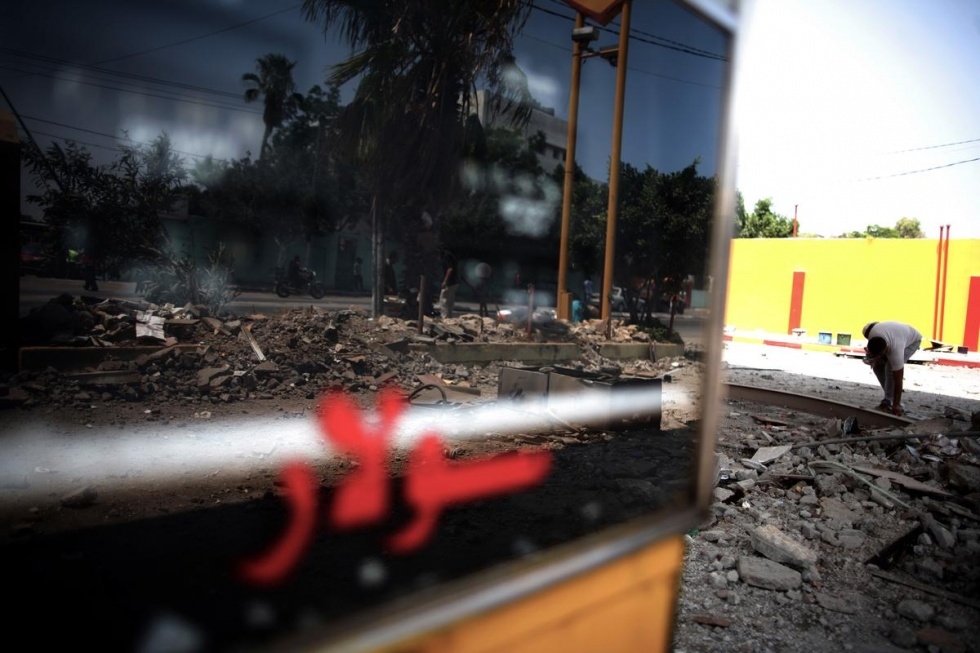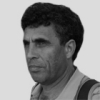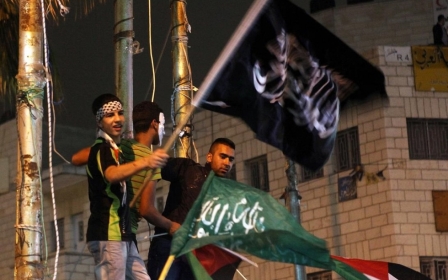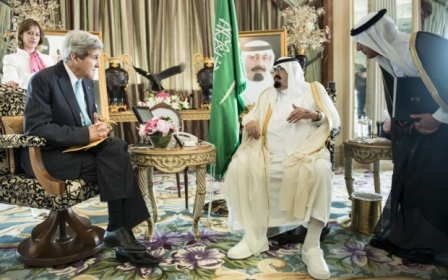New boundaries drawn in the Israeli-Palestinian conflict

On 11 September 2005, when the last Israeli soldier left the Gaza Strip, ending 38 years of military and civilian rule, no one seriously thought that this withdrawal could be reversed, that Israel might one day come back and control directly this narrow and densely populated piece of land. For most Israelis, Gaza was considered always something between a nuisance and a nightmare. “For my part, Gaza may drown at sea,” said Prime Minister Yitzhak Rabin right after the Oslo agreements, reflecting the long-time Israeli dream to get rid of Gaza and its refugee camps, a constant reminder of the 1948 war that never really ended.
In the decade that followed the unilateral withdrawal, Israel was not able to forget about Gaza. Operations Cast Lead in 2008 and Pillar of Defense in 2012 were just the picks of an almost continuous violent confrontation: 15,000 rockets and mortar shells fired from Gaza into Israel, thousands of Israeli air strikes and few dozens of “targeted killings”, occasional ground incursions into the Gaza Strip and a practical Israeli siege on Gaza from land and sea. The Mavi Marmara incident in May 2009 was part of the enforcement of this siege. Although locked behind fences and walls and free of Israeli settlers, Gaza was always at least in the back of Israel’s mind.
Yet until some two weeks ago, the option of reoccupation of the Gaza Strip and reinstatement of Israeli rule was off the table of Israeli decision makers. To support it was considered political suicide. Operation Solid Rock (the English version Defensive Edge does not convey the original meaning of the words in Hebrew) changed all that. For the first time since 2005, such an option is not discarded offhand. Politicians support it openly, senior military experts endorse it and even the public seems favourable. In a poll published today in Israel’s Hayom newspaper, 77 percent oppose a ceasefire in the current situation and 65 percent think that the scope of operation “Solid Rock” should be the overthrow of Hamas’s rule in Gaza, something which will be almost impossible to achieve without full control over Gaza.
Change of mind
How did this change of mind come about? The continuous firing of rockets into Israel, 16 days into the conflict, did play a part. True, only two civilians were killed and due to the effectiveness of the Iron Dome system, there is no real panic among Israeli civilians, but life is disrupted, especially in the southern parts of the country. Absence from work rose from 6 percent in the beginning of July to 33 percent two weeks later. The fact that the army admits its inability to stop these rockets certainly does not help Israelis to feel reassured. In the same poll, 68 percent estimate that there is a slim or zero chance that rocket launching will stop when the operation is over.
The tunnels - which were dug under the border between Gaza and Israel, and from which dozens of Hamas fighters keep emerging almost on a daily basis - played a much bigger role. Not only did they allow Hamas to hit Israeli soldiers in their own territory, they pose a psychological threat which is difficult to cope with for the residents of the nearby kibbutzim and cities. The fact that the enemy could pop up any moment from under the ground is conceived as a sort of nightmare.
These feelings explain the huge majority in support of the ground operation, whose official goal is still to detect and destroy these tunnels. The relatively high losses, 27 soldiers killed up till this morning, serve only to strengthen the will of the army and public to prove that they did not die in vain. Naftali Benet, who leads the hardliners in the cabinet, went as far as threatening to break down the government if a ceasefire were to be signed before the full destruction of all tunnels in Gaza.
But it seems that the real reason lies deeper. “The story of repeated deterrence rounds just does not work,” says Dr Gabi Siboni, retired colonel and head of the programme on Military and Strategic Affairs in the Institute for National Security Studies (INSS) and one of the drafters of the Dahiya doctrine, which is based on deterrence. “The result of every round is that Hamas is getting stronger. It surely got stronger compared to Cast Lead. You put a fence, and they come underneath. It is a problem we cannot live with, it cannot be accepted.” Therefore, according to Siboni, there is no choice but to “go in and clean Gaza” from Hamas.
Yuval Diskin, ex head of the Shin Bet, who only recently criticised the Netanyahu government for creating an illusion that the status-quo could go on without a political settlement with the Palestinians, expressed similar views in Yediot Ahronoth today. Israel has the ability to widen its ground operation in to populated areas, claims Diskin, and even stop completely rocket launching into Israel. Hamas will fight fiercely and might inflict a “painful price” on Israel, but its ability to resist a direct confrontation with Zahal is weaker than expected. The conclusion: “without such an operation, a problematic status quo situation will be created, whose meaning is continuous blood shedding with no ability to win”.
Window of opportunity
While there is no doubt that if Israel chooses, it can reoccupy Gaza as, at least for now, it seems that the Israeli public is ready to “pay the price” in human lives and economic losses. Unfortunately, it is certainly ready to inflict a terrible price on Palestinian lives, whether they are military activists or civilians. Contrary to the massacre in Sabra and Shatila in 1982, the huge number of dead bodies in the streets of Shaja’ia did not have any substantial effect on Israeli public opinion. So far it seems that international public opinion, helped by Egypt’s hard line against Hamas, is not openly anti-Israeli, if not supportive in many cases. This, of course, may turn upside down, but it is evident that Israel feels it has a “window of opportunity” to do things it did not dream to do before.
Siboni says that the “cleaning” may take a few months, even a year or more. Two and a half years passed between Operation Defensive Shield in which Israel took over the cities of the West Bank in 2002, till the end of the second intifada. But provided that the international community and the Arab world will allow Israel to repeat this model in Gaza, and provided that the West Bank will remain relatively calm and that the number of Israeli casualties will not make the public change its mind about the war in Gaza, the huge question which remains is what Israel will do with Gaza the day after.
Siboni is saying that Israel will have to choose between reactivating the military administration in Gaza, cancelled after the withdrawal in 2005, or handing it over to President Abbas’s government, after crushing Hamas’s ability to govern and fight. The terms of this transfer of power are not really clear. Diskin is offering a detailed model of demilitarisation of the Gaza Strip. The deeper the demilitarisation would be, the more the siege on Gaza would be lifted.
We are still very far from full reoccupation of Gaza by Israel. There is little doubt that such a move could lead to terrible bloodshed. But what is interesting in this change of heart of the Israeli establishment towards Gaza, in this readiness to reoccupy it even at the cost of many Israeli lives, represents an understanding that Israel cannot keep on running away from Gaza, hat Gaza will not drown itself in the sea of its own free will. After years of negation, Israel finally admits that Gaza could not be separated from the West Bank, that there will be no solution to the Palestinian problem without a solution to the problems of Gaza. Is this not what the people of Gaza, and even Hamas, wanted all along? Is this not the reason they didn’t settle for the Egyptian “quiet against quiet” formula? What is sure is that the Gaza war is changing the map of the Israeli-Palestinian conflict.
Meron Rapoport is an Israeli journalist and writer, winner of the Napoli International Prize for Journalism for a inquiry about the stealing of olive trees from their Palestinian owners. He is ex-head of the News Department in Haaertz, and now an independent journalist.
The views expressed in this article belong to the author and do not necessarily reflect the editorial policy of Middle East Eye.
Photo credit: A reflection of the destruction at al-Aqsa Martyrs Mosque, a mosque in Gaza CIty razed on 22 July as part of Israeli's Operation Protective Edge (AA)
Stay informed with MEE's newsletters
Sign up to get the latest alerts, insights and analysis, starting with Turkey Unpacked
Middle East Eye delivers independent and unrivalled coverage and analysis of the Middle East, North Africa and beyond. To learn more about republishing this content and the associated fees, please fill out this form. More about MEE can be found here.





